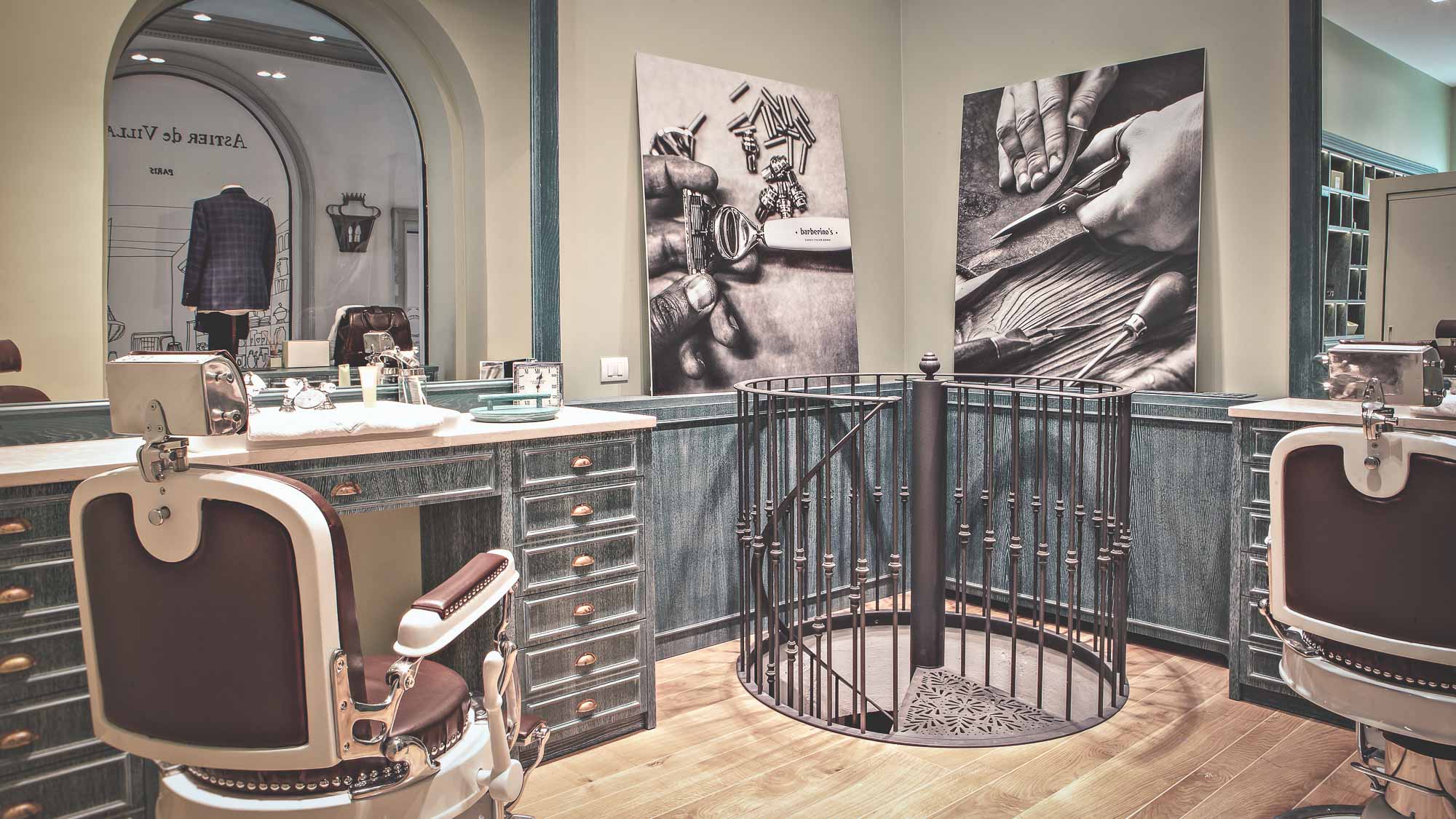The oldest barber school in the world originates from Sicily, Italy. The owner also migrated to the States in the first part of the 1900s, to open more of the barbershops that are so fashionable today.
Niccolò Bencini (and his co-founder) stayed a few months in Sicily to found Barberino’s in Milan in 2015, and oversee the experience ― emphasizing tradition and rituals ― in their shops. This time, our series about craftsmen 60 Minutes with takes you inside the new Italian barbershop.

Hi Niccolò, how did the idea of opening the first Barberino’s come together?
In a previous life, my buddy and I used to travel for work around Europe. During our lunch breaks, we loved going to see local barbershops, spending time there and enjoying the atmosphere.
In the barbershop market, there were trends we didn’t particularly like: long beards, piercing and tattoos ― the biker style ― where hair was cut using hair clippers only. I.e., English-style barbers.
We wanted to open our own place to create a barbershop for people like us, who craved a more traditional and refined experience. With this in mind, we started from the place where everything began in barber history: Sicily. The barber’s craft originates from there, where beards are curated every single morning.
What does a client see when coming to your shop?
The atmosphere is like entering an Italian barbershop from the early 20th century with a strong Sicilian vibe. From the interior design to the overall experience, everything speaks to this kind of style ― even the wardrobes’ knobs and ceramic taps are typical of the period.
At our spaces, you can switch off your brain from everyday thoughts and dedicate the time to yourself. And you know, there’s a real study behind choosing green as a color.
Right, why do I only see green walls here?
If you think about it, green was used in the old fashioned luxury hotels. A lot of research has been done about this color. It’s hypothesized that green has a relaxing effect on the eyes. The small details make all the difference. And the atmosphere is everything.
Customers come in to relax. But, is there a place in Milan where you like to chill out?
There’s actually a place where I love spending time reading a book or simply paging through magazines. It’s Braidense Library. You find it inside Accademia di Brera in Milan (Brera district); it’s a fantastic place.
We’re always pretty fascinated by the contrast between tradition and innovation. What’s more old-fashioned and what’s more modern in your barbershop?
The techniques we’re using to cut are traditional: we never use hair clippers (unless the client requests it), and the beard is always shortened with scissors and a comb. There’s also the ancient technique with a candle, where we use a little flame to shorten the hair. Which actually, we usually don’t do because then the place would smell like smoke.
You can see modernity mostly in the payment process: in a very traditional business where, for generations, they’ve been always paid with cash, at our shops you can use all the credit cards you wish. One of our shops is completely cash free: no bills are accepted.
You must have seen many people coming and going here. Has anyone really stuck out in your mind?
We have a customer ― a 93-year-old theater director ― who lives around here and walks here to cut his beard every two days. He’s a loyal customer and always on time: we’ve had him sitting down on our couches since day one. He always schedules two months ahead and only pays via plastic. He’s the real modernity here.

Starting a new thing can eventually lead to teaching. Why did you decide to open a barber school as well?
Our school is structured in two courses: one for our own employees, and one for anyone who is interested in the barber world. We first felt it was necessary to open a school to train our team. Everyone who works here should be at the same level; the customers who visit Barberino’s should experience a brand.
The other course is for a limited amount of people ― three people max per group, for a two-day course― who are curious to learn how to cut freehand.
Where do you imagine your barbershop in the near future?
We’d like it to become the worldwide landmark in the grooming business. Our values are based on made in Italy, and timeless techniques. The magic does the rest.








